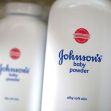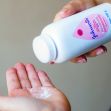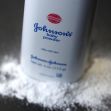After a Manhattan judge ruled that a New York couple’s $325 million award in an asbestos-related mesothelioma tort case against Johnson & Johnson (J&J) was excessive, plaintiffs stipulated to a nearly two-thirds reduction in damages, rather than having to face a new trial.
In a 61-page opinion issued November 11, Hon. Gerald Lebovits of the Supreme Court of New York concluded that the awards were too high, based on compensatory-to-punitive damage ratios recommended by the U.S. Supreme Court. He concluded that the punitive damage award should be reduced to $105 million from $300 million and the compensatory damage award, split between the two plaintiffs, should now be $15 million instead of $25 million.
The decision was a split one. While he sided with J&J and concluded that the damage awards were excessive and violated the company’s due process rights, he also agreed with plaintiffs that the jury’s verdict as to liability was appropriate and denied J&J’s request to vacate the verdict holding J&J liable.
Lebovits’ Decision and Order reviewed the records from two lengthy trials related to the claims of plaintiffs Donna and Robert Olson. They asserted that Ms. Olson developed mesothelioma as a result of her extended exposure to asbestos in talcum powder. They also claimed that J&J failed to warn consumers about the scientific community’s known dangers from inhaling the talc contained in their baby and shower products and that the products themselves were defectively designed.
The trial was bifurcated into two phases: (1) liability, and if found liable, (2) damages. The jury first found J&J liable and then awarded the $325 million in damages.
Mesothelioma, as anyone who watches daytime television commercials has learned, causes malignant tumors in the lungs, abdomen, or heart caused by inhaled asbestos fibers. The tumors cause shortness of breath or chest pain and may appear up to 30 years after exposure, although death usually results in approximately one year after diagnosis.
The Olsons’ claims are just two of over approximately 22,000 asbestos-related litigations that contend J&J’s talcum-containing powders cause not only mesothelioma but also ovarian cancer. J&J maintained that its removal of talc-containing powders from sale in the U.S. and Canada was for “commercial” reasons and was not an admission of any concerns about health and safety. Previously, J&J has prevailed in some cases, while others have been dismissed.
Olson’s evidence showed that she had used Johnson’s Baby Powder and Shower to Shower for decades. Both products were found to contain small but significant levels of asbestos. The court disagreed with J&J’s contention that no rational jury could have found liability. J&J also failed to persuade the court that in order to prevail, plaintiffs had to introduce evidence that proved the exact bottles of talcum powder used by Ms. Olsen since the 1950s contained asbestos.
Defendants also failed to convince the judge that there was insufficient evidence to demonstrate that Ms. Olson’s asbestos exposure caused her cancer. Olson had introduced the testimony of several expert witnesses to establish the causal connection. J&J also challenged the Olsons’ design-defect claims. They claimed their products were “meticulously made according to detailed plans and specifications” and argued that there was insufficient evidence to support a design-defect verdict because “the inclusion of asbestos” was not part of the products’ specifications. The Judge rejected this contention as well, finding that there was “substantial likelihood of harm to the user and it was feasible to design the product in a safer manner.”
That safer manner could and should have been the substitution of cornstarch-based powder for the talcum-based one that J&J favored. J&J’s own market research showed that consumers would accept the alternative powder.
Similarly, the court rejected the defendant’s argument that there was no duty to warn about the dangers of asbestos because it neither knew nor should have known about the link between its product and serious injury. Instead, it found the breach of that duty “was a substantial factor” in causing Ms. Olson’s mesothelioma, especially because tests dating back to the 1950s showed that talc from both Vermont and Italy, used in Johnson’s Baby Powder, contained asbestos which could not be removed during manufacturing. In addition, since the 1970s evidence showed J&J had received repeated scientific warnings that there was no safe level of asbestos.
The Court also found that J&J used testing methods with “serious shortcomings” and “provide incomplete or misleading information” to the Food and Drug Administration (FDA) to avoid regulation of its talcum powders and prevent citizen’s petitions about asbestos safety. The judge further found that J&J sought to “control scientific research into asbestos and talc.” J&J challenged the admissibility of testimony by scientific experts and argued there was misconduct during the plaintiff’s summations.
Judge Lebovits additionally denied J&J claims of insufficient evidence to support Mr. Olson’s loss of consortium claims, finding that Ms. Olson’s exposure to asbestos both preceded and continued throughout their marriage.
While none of these tactics proved fruitful, J&J’s contentions that damage awards were excessive did prevail. Judge Lebovits had to evaluate whether the award materially deviated from reasonable compensation, a process that was to be guided by comparison to awards that had been approved in previous cases.
The Judge reviewed Ms. Olson’s extensive pain and suffering during her cancer treatment, including the complete removal of one lung, and debilitating chemotherapy and radiation that left her completely dependent on her husband for care. Ms. Olson could barely walk, could not climb stairs, and prevented any marital intimacy, even a small kiss. As horrific as this was, the ratio between punitive and compensatory damages was 12:1, reflecting the $300 million in punitives and $25 million in compensatories. Citing the U. S. Supreme Court in the 1993 case State Farm v. Alliance Res. Corp, Lebovitz wrote, “single-digit multipliers are more likely to comport with due process” than much larger ratios. The Judge also admitted that he was unaware of any New York case with a ratio larger than 10:1.
In conclusion, the Judge found that the “maximum constitutionally sustainable ratio of punitive to compensatory damages in this case is 7:1, not 12:1… (thus) compensatory damages should be reduced to $15 million, a 7:1 ratio works out to $105 million in total punitive damages (rather than $300 million). In turn, under the jury’s allocation on the Phase II verdict sheet of punitive damages between the two defendants, the $105 million figure should be broken up into $70 million against Johnson & Johnson and $35 million against Johnson & Johnson Consumer Inc…Thus, this court holds that a new trial on damages must be conducted unless the Olsons stipulate within 30 days of service of notice of entry to accept a total compensatory award of $15 million…and a total punitive award of $105 million…”
The Olsons stipulated to the new amount, ending the matter.






